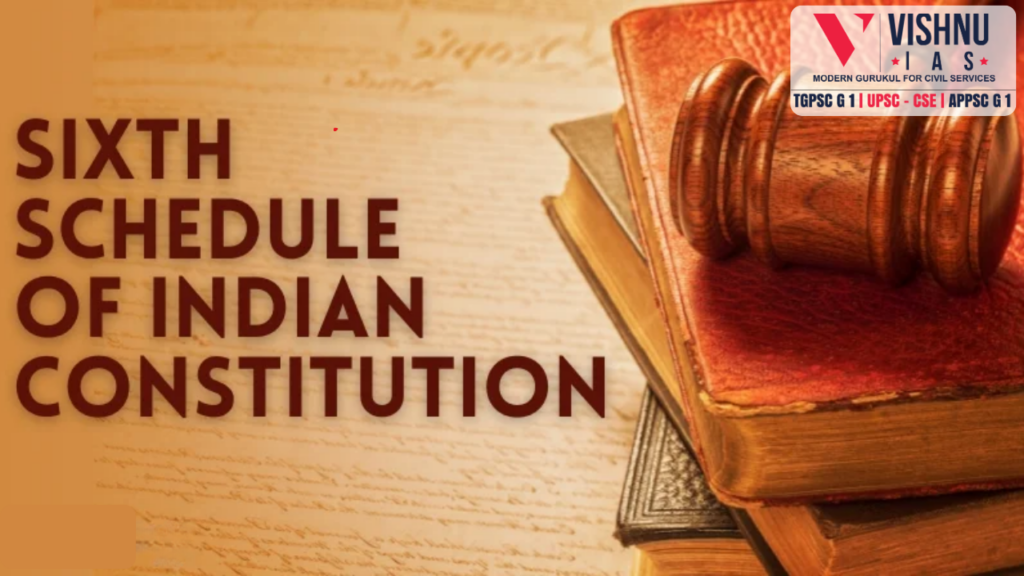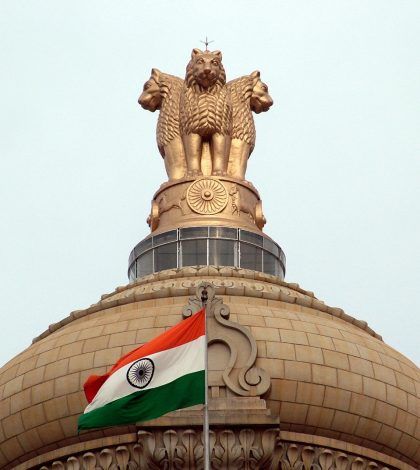Status of Sixth Schedule Areas
Approach
- Introduction: add the few facts about the Sixth Schedule Areas
- Body: add comprehensive analysis about the role of governor and president in Status of Sixth Schedule Areas with present challenges and limitations
- Conclusion: add its contemporary context
INTRODUCTION
Overview of the Sixth Schedule
The Sixth Schedule of the Indian Constitution pertains to the administration of tribal areas in the northeastern states of Assam, Meghalaya, Tripura, and Mizoram. It aims to protect the rights and cultural identity of indigenous tribal populations by granting them a degree of autonomy through the establishment of Autonomous District Councils (ADCs) and Regional Councils.
BODY
Role of Governor and President in the Status of Sixth Schedule Areas
Role of the Governor
- Administrative Authority: The Governor has significant powers under the Sixth Schedule. They can organize and reorganize autonomous districts, alter their boundaries, and even change their names. This includes the power to create new autonomous regions within these districts if different tribes inhabit them
- Legislative Oversight:The Governor’s assent is required for all laws passed by the District and Regional Councils. This ensures that the laws are in line with the broader legal framework of the state and the country.
- Judicial Functions:The Governor can establish Village Councils and District Council Courts to handle disputes among tribal members. These courts have limited jurisdiction and cannot handle severe offenses
- Financial Powers:The Governor oversees the financial management of the ADCs, including the preparation and approval of budgets, and the imposition of taxes and fee.
Role of the President
- Oversight and Reporting: The Governor of each state with Scheduled Areas must annually report to the President on the administration of these areas. This ensures that the central government remains informed about the governance and development in these regions.
- Executive Directions:The President has the authority to issue directives to the state governments regarding the administration of Scheduled Areas. This can include measures to improve governance, protect tribal rights, and ensure the effective implementation of the Sixth Schedule
- Amendments and Changes:The President, in consultation with the Governor, can alter the boundaries of Scheduled Areas, add new areas, or remove existing ones. This flexibility allows for adjustments based on changing circumstances and needs
Present Challenges and Limitations
- Administrative Inefficiencies: The dual authority of the Governor and the District Councils can lead to administrative delays and inefficiencies. The overlapping jurisdictions sometimes result in conflicts and slow decision-making.
- Limited Financial Autonomy:Despite the powers granted, ADCs often face financial constraints. Limited revenue generation capabilities and dependence on state and central grants can hinder their ability to implement development projects effectively.
- Cultural and Political Conflicts:The diverse tribal populations within autonomous districts can lead to internal conflicts. Balancing the interests of different tribes while maintaining harmony is a significant challenge.
- Integration with Mainstream Development:Ensuring that the development in Sixth Schedule areas aligns with national development goals while preserving tribal identity is complex. There is often a tension between modernization and cultural preservation.
CONCLUSION
The roles of the Governor and the President in the administration of Sixth Schedule areas are crucial for maintaining the balance between autonomy and integration. While the framework provides significant powers to protect tribal rights and promote self-governance, challenges such as administrative inefficiencies, financial constraints, and cultural conflicts need to be addressed to ensure effective governance and development.
Anthropology Full Course at Vishnu IAS Academy
What does Course Offer?
- 4 Months (250+ Class Hours)
- Online (App + Web) / Offline / Hybrid Mode of Classes
- Live + Recorded Videos Access For 1 Year
- 2 Hour Live Class From Monday to Saturday (1.5 Hours for Class + ½ Hour for Doubt Solving)
- Foundation to Advanced Level of Teaching
- Simple and Integrated Content
- One Stop Solution Books
- Regular Value Added Content
- Current Affairs & Case Studies Modules
- Daily Answer Writing Practice
- Weekly Grand Tests On Sundays & Evaluation With Guidance and Topper Will be Rewarded
- 500+ Model Answers
- 9 AM – 9 PM Support System
- Free GS Current Affairs
- Free Interview Guidance for Anthropology


